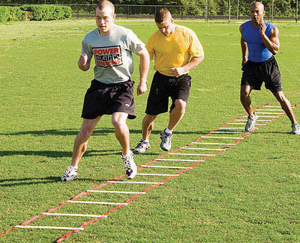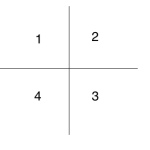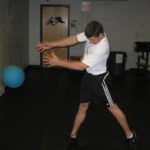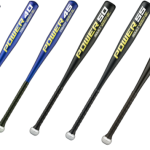Adding Agility Drills to Improve Baseball Footwork
This is the second in a series of posts we will be doing on off season conditioning specific to baseball players. In this post, we will focus on footwork and agility.
Any experienced coach will tell you that most errors, especially throwing errors are a result of poor, lazy, or improper footwork. We often just assume that players are capable of performing the footwork we want them to, but it wasn’t until a few years ago that I put an emphasis on improving footwork and the improvement in our program has been noticeable.
A key to proper footwork training is that players have to be required to react to different patters and adapt as they will be required to do this during the game.
We use all of these methods of training footwork at some point during the season. We often incorporate them into our warm-up, as a small segment after the warm-up, or as a station in a rotation practice.
Attend our FREE Web Clinic on creating strong, explosive, powerful, dynamic baseball players
Agility Ladder:
Agility ladders are one of the most common methods for improving footwork and agility. They do work, but I caution you that they can become repetitive if the same patters are utilized over and over.
Here are a few of the drills we utilize:
1.) Two feet in each rung
2.) Bunny hops
3.) Face sideways, two feet in two feet out of each rung.
4.) Alternating feet side hop
5.) High knees, two in each rung
6.) Carioca
We use agility ladders as a station in our daily warm-up.
Small Hurdles
Small hurdles are another inexpensive agility method that can be easily incorporated into a warm-up or practice.
Here are a few of the drills we utilize:
1.) High knees, two feet between each hurdle
2.) Bunny hops facing forward
3.) Sideways bunny hops
4.) Sideways high knees
5.) Side facing, forward/backpedal weave
We also utilize small hurdles during our daily warm-up.
Quadrant Drills
Quadrant drills can give players the variety they need to react to in game situations by varying the pattern and having players react to new patters.
Tape a cross on the floor, and familiarize the players with the number of the quadrants seen below:
The coach will call out a movement pattern, and the athletes will hop the pattern with two feet (or one foot as the offseason progresses) for approximately 10 second intervals with 30 seconds between each repeating the pattern as many time as possible.
To run successful quadrant drills, players should keep their head and center of gravity over the center of the cross, should spend as little time on the ground as possible, and should keep their chest facing forward.
Examples of patterns we use:
1.) 1-2
2.) 1-4
3.) 1-3
4.) 2-4
5.) 1-2-3
6.) 2-1-4
7.) 1-2-3-4
8.) 1-4-3-2
9.) 1-2-4-3
10.) 2-1-3-4
Attend our FREE Web Clinic on creating strong, explosive, powerful, dynamic baseball players
Box Step Off with Movement
This is very high impact and intensity drill so it should be done later in the offseason after player’s bodies have adjusted to the rigors of a conditioning program.
The player stands on a plyometric jump box and steps off forward. A partner or coach will point to the player’s right, left, up or forward as the player comes off the box. When the player hits the ground they will take two or three hard steps in that direction. If the partner points up in the air the player will perform a vertical jump as soon as they hit the ground.
This drill can also be done with a side set off allowing the player to cross over and run backward.
To add a move baseball specific feel, put a glove on the player, have them take two or three steps and field a baseball to that side. If they go backward, throw a ball over their head to run under and catch.
6 Cone Agility Drills
Set up cones in the following manner with each cone about 5-8 feet apart.
C C
C C
C C
Click HERE to download your free 6 cone agility program.
 Posted by Kyle Nelson
Posted by Kyle Nelson- Posted in Conditioning
 Nov, 10, 2014
Nov, 10, 2014 No Comments.
No Comments.
Elite members login here
Check out what’s New/Hot!
Recognizing, Diagnosing, and Fixing Common Hitting Flaws eCourse The 3 metrics we tested on Blast motion sensors this year Sneak Peek Inside an Elite Q and A The batting practice continuum Elite Member’s area table of contents 50+ “Chaos” hitting drills
5 sample Chaos hitting drills FREE
Mental Skills and Culture Building The hitting pyramid Welcome Elite Member, Trey! Ideas for a pitcher first practice 12 week bat speed improvement plan Make plans this offseason to have your team playing their best baseball at the end of the year” Top 5 hitting drills to translate practice skill to game performanceHow we used Blast Motion sensors with a team in 2019
What to do if your hitters are overmatched Welcome Elite Member, Tommy! Setting your baserunners up for success Welcome Elite Member, Mike! A consulting call with Elite Member Matt FREE Web Clinic: Developing Athletic, Consistent, Extraordinary Infielders
 Coach Kyle Nelson
Coach Kyle Nelson






